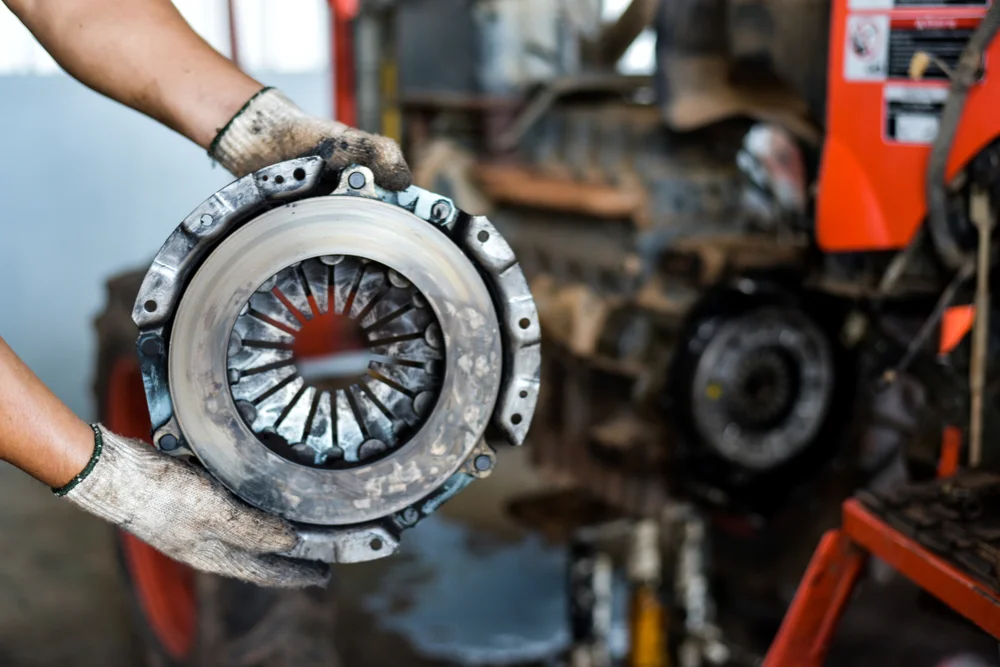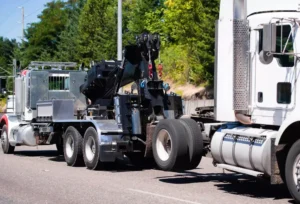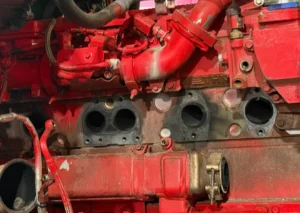
When you’re running heavy loads and putting thousands of miles on the road, your truck’s clutch takes a beating. It’s one of the hardest-working parts of the drivetrain, and when it begins to wear out, it won’t stay quiet for long. Ignoring the signs can lead to costly downtime, transmission damage, and even breakdowns that leave you stranded.
In this blog, we’ll cover the most common signs of clutch failure, what worn clutch components look like, and why timely clutch replacement is essential for keeping your rig on the road.
Why Clutch Replacement Matters for Heavy-Duty Trucks
A clutch isn’t just a wear part—it’s the vital connection between your engine and transmission. Every time you shift gears, haul a load uphill, or idle in traffic, your clutch is engaging and disengaging. Over time, the clutch disc, pressure plate, and release bearing wear down.
If left unchecked, a failing clutch can:
Cause your truck to lose power under load
Damage your flywheel and transmission
Create dangerous situations on the road
Lead to costly roadside breakdowns
At Sam’s Roadside Service Towing & Recovery, we’ve seen firsthand how small clutch issues can snowball into expensive repairs. That’s why knowing the warning signs—and acting fast—can save you thousands.
1. Slipping Under Load
One of the earliest signs of clutch failure is slipping. If your truck feels like it’s revving high but not pulling like it should—especially when climbing hills or hauling a heavy trailer—you’re likely experiencing clutch slipping under load.
This happens when the clutch disc’s friction material is worn, preventing it from fully engaging with the flywheel. The result? Power loss, heat buildup, and accelerated wear.
👉 If you notice slipping, schedule a truck clutch repair before it leaves you stranded.
2. Hard or Crunchy Shifting
If shifting gears feels harder than usual—or you hear grinding during gear changes—your clutch may not be fully disengaging. This often points to a worn disc or pressure plate.
When ignored, hard shifting can damage your transmission synchronizers, leading to expensive transmission work on top of a semi-truck clutch replacement.
3. Burning Smell
That burning odor you sometimes notice after takeoff or while shifting under heavy load? That could be your clutch overheating. Excessive slipping creates heat, which burns and glazes the clutch disc. Once glazed, the disc loses grip and wears faster.
If you smell burning frequently, it’s time for a clutch inspection.
Roadside Support You Can Count On
No matter the situation, our reliable roadside assistance ensures you get the help you need, fast. From breakdowns to emergencies, we’re here 24/7 to keep you moving.
4. Poor Acceleration
Pressing the pedal to the floor and still crawling? That lag between engine RPMs and wheel speed is a telltale sign your clutch isn’t transferring power effectively. Broken springs, worn friction pads, or damaged internals can all cause major power loss.
At this stage, a clutch replacement is usually unavoidable.
5. Noises When Engaging or Releasing
Clunking, rattling, or squealing when pressing or releasing the clutch pedal can mean broken springs, loose parts, or worn internal components.
We recently pulled a clutch disc from a truck where the friction pads were missing entirely, leaving the internals exposed. The result was constant noise and severe driveline vibration.
6. Clutch Pedal Issues
A spongy, soft, or inconsistent clutch pedal feel is another warning sign. While sometimes caused by hydraulic issues, it can also mean the clutch itself is on its last legs. If your pedal is sticking to the floor or engagement is unpredictable, don’t wait until it fails completely.
7. Vibration or Chatter on Takeoff
If your truck shakes or bucks when letting off the clutch pedal, uneven wear or heat spots on the flywheel or disc could be the culprit. This “chatter” is more than just annoying—it’s a sign of serious wear that needs attention.
What Worn Clutch Components Look Like
Clutches rarely fail all at once—they wear down gradually until one day, they simply stop working. In one recent clutch replacement job, we removed a disc where the friction pad had completely worn away in spots. The springs were loose, the disc was damaged, and the truck had been struggling with poor acceleration and slipping for weeks.
This kind of damage doesn’t just reduce performance—it risks total failure, leaving drivers stuck on the side of the road.
Don’t Wait Until You’re Stuck on the Road
The truth is, clutch issues always start small: a slip here, a smell there, or a slightly harder gear change. But if ignored, they escalate quickly, leading to breakdowns, towing costs, and major repairs.
At Sam’s Roadside Service Towing & Recovery, we specialize in:
Our mobile truck repair units are equipped to handle clutch failures and drivetrain issues on the road or in our shop.
Final Thoughts
Your clutch is one of the most critical components in your truck. Waiting too long for a clutch replacement doesn’t just cost money—it risks safety and keeps you from meeting delivery schedules.
If you’ve noticed any of the signs above, don’t wait. Contact Sam’s Roadside Service Towing & Recovery today for professional clutch diagnostics and replacement. We’ll get you back on the road quickly, safely, and without unnecessary downtime.
Frequently Asked Questions
Common signs include slipping under load, difficulty shifting gears, burning smells, poor acceleration, unusual noises, and vibrations during takeoff.
A heavy-duty truck clutch can last anywhere from 200,000 to 300,000 miles, depending on driving conditions, load weight, and maintenance practices.
Driving with a slipping clutch is risky. It reduces power transfer, increases fuel consumption, and can cause flywheel and transmission damage if ignored.
The cost varies by truck model and damage, but on average, a semi-truck clutch replacement can range from $1,500 to $3,500, including labor and parts.



